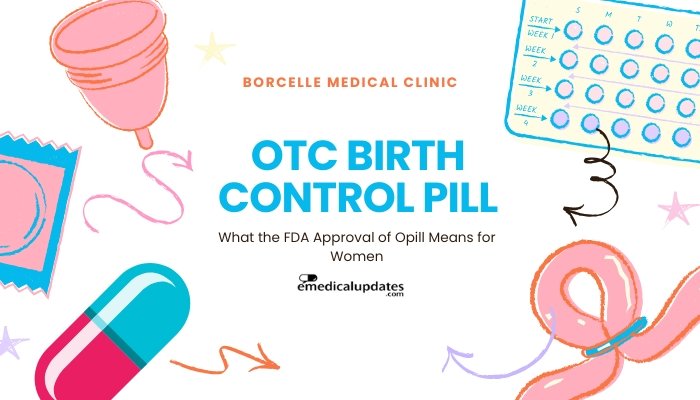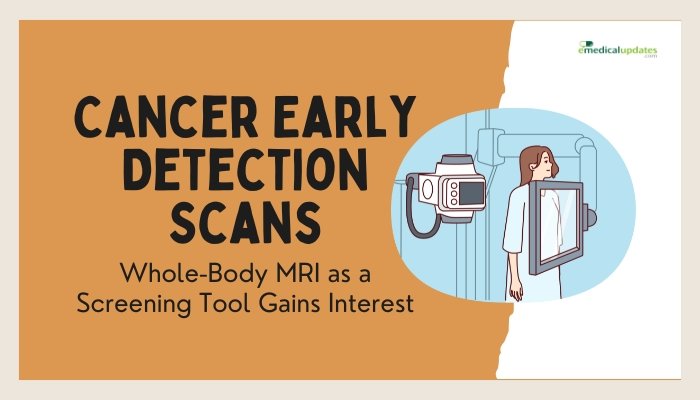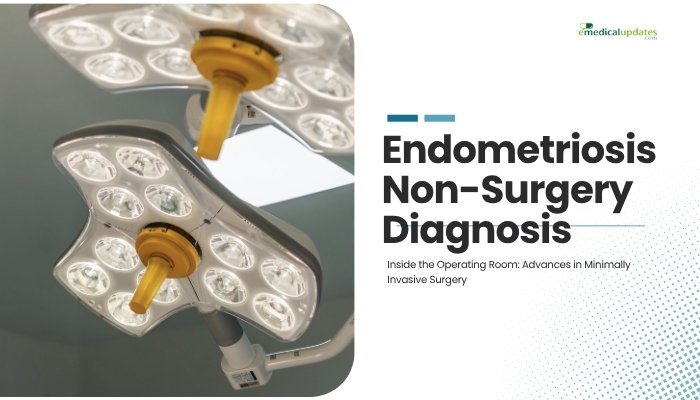Introduction
Birth control plays a central role in women’s reproductive healthcare. Various methods exist, such as condoms, intrauterine devices (IUDs), implants, patches, and daily oral pills. Historically, hormonal birth control pills have required a prescription in most countries, including the United States.
This requirement has sometimes posed barriers for women who lack consistent medical coverage or the time to visit healthcare providers regularly.
That dynamic changed with the U.S. Food and Drug Administration (FDA) granting approval to Opill as an over-the-counter (OTC) birth control pill. This event marks a pivotal turning point for women who prefer oral contraception yet have faced access hurdles.
Retail availability of a daily contraceptive pill without the need for a prescription broadens reproductive choices, potentially reducing unplanned pregnancies. At the same time, it sparks questions about how this new OTC method fits into the existing landscape of contraception. Discussions about safety, cost, and who should consider using an OTC pill are now more relevant than ever.
This article delves into Opill’s key characteristics, its path to approval, and what it might mean for women’s reproductive health. It outlines the biological mechanism of progestin-only pills, their pros and cons, and practical considerations for buyers.
It also includes a table to compare prescription-only birth control pills and OTC options, shedding light on how this shift might influence future medical guidelines. By the end, readers will have a thorough understanding of this new development and its broader implications for reproductive healthcare.
What Is Opill?
A Progestin-Only Pill
Opill is a type of oral contraceptive known as a progestin-only pill (POP). Unlike combination pills that contain both estrogen and progestin, Opill relies exclusively on a synthetic form of the hormone progesterone. This approach serves several functions:
- Thickening of cervical mucus: It makes it more difficult for sperm to enter the uterus.
- Possible suppression of ovulation: Although some ovulation may still occur, it is often reduced.
- Endometrial changes: The lining of the uterus becomes less suitable for implantation.
Progestin-only pills are often recommended for women who cannot tolerate estrogen or have conditions that increase risks when they take estrogen-containing contraceptives. The FDA’s decision to make Opill available OTC stems from confidence in the drug’s safety profile and effectiveness when used correctly.
Long History of Use
Opill is not a new invention. It has existed under prescription-only status for years. During that time, healthcare providers amassed data on its efficacy, side effects, and real-world outcomes. This experience laid the groundwork for regulatory bodies to evaluate whether the pill could be used safely without a prescription. The shift to OTC reflects a broadening acceptance of progestin-only methods in mainstream contraceptive care.
How the Approval Happened
Regulatory Evaluation
For a birth control pill to transition from prescription-only to OTC, it must meet the FDA’s standards. The agency evaluates:
- Safety: The product should have a low risk profile, with limited serious side effects.
- Efficacy: Users must be able to achieve a high rate of pregnancy prevention when following directions on their own.
- Consumer Comprehension: Potential buyers should be able to understand dosing, side effects, and other relevant instructions without direct supervision from a doctor.
Opill’s manufacturer submitted trial data showing consistent results: women of various ages and backgrounds could understand and follow the dosing schedule as directed on the label. These findings convinced regulators that the benefits of making the pill more accessible outweighed possible risks.
Milestones and Public Input
The FDA approval process included public advisory committee meetings where medical professionals, advocacy groups, and the general public voiced their views on expanded birth control access. Topics included teen use, misuse risks, and the impact on unintended pregnancies. Panel discussions revealed a strong consensus that over-the-counter access to progestin-only pills would positively influence public health by giving women a simpler, more direct way to obtain contraception.
Effective Date
After the FDA’s final decision, the manufacturer set up distribution networks to supply major drugstores, grocery chains, and potentially online platforms. While shipping schedules may vary, many consumers can expect to find Opill on store shelves once the production runs reach the market, typically within a few months of approval. Pharmacies will position Opill in designated areas, near other over-the-counter women’s health products, to ensure visibility and easy purchase.
Why Over-The-Counter Access Matters
Reduced Barriers to Contraception
When prescription-only status was the norm, several groups encountered difficulties obtaining birth control. These obstacles often included:
- Limited Clinic Hours: Work schedules and childcare duties sometimes made it tough to attend medical appointments.
- Travel Challenges: Rural women or those without personal transportation found it difficult to reach clinics.
- Insurance Gaps: Individuals lacking comprehensive insurance faced out-of-pocket costs for doctor visits.
Allowing Opill on retail shelves creates a more convenient option. Women can pick it up as easily as common pain relievers or vitamins, helping them manage their reproductive needs without additional logistics.
Potential for Lower Unplanned Pregnancy Rates
Access to reliable contraception remains central to lowering unplanned pregnancy rates. Studies have indicated that easier availability of oral contraceptives correlates with fewer unintended pregnancies, provided users follow the correct dosage. Removing prescription barriers can promote consistent usage by letting women start or continue their birth control without waiting for a medical appointment. Over time, experts anticipate a measurable decrease in unplanned pregnancies in communities that embrace this option.
Confidentiality and Autonomy
Some consumers prefer the privacy of buying birth control without involving a healthcare system. Teenagers might feel hesitant about disclosing their sexual activity to a family physician, and adults could worry about privacy within electronic health records. OTC availability provides a discreet solution. Individuals can handle their contraceptive decisions independently, choosing whether to consult a pharmacist or friend for guidance. This autonomy resonates with those who value discretion in personal health matters.
Mechanism of Action
Progesterone’s Key Role
Progesterone is vital for female reproductive processes. Synthetic progestins mimic the natural hormone’s effects. Opill’s mechanism rests on preventing or reducing ovulation and creating an unfavorable environment for sperm. These combined actions help block fertilization.
Cervical Mucus Alteration
A major factor is the thickening of cervical mucus. After a woman ingests Opill, mucus in the cervix becomes denser, restricting sperm entry. If sperm cannot pass the cervix, fertilization cannot take place. Even if ovulation occurs, this barrier significantly lowers the chance of conception.
Modifications in the Uterine Lining
Opill also alters the endometrium, making implantation less likely if fertilization does occur. The pill’s actions thus work on multiple levels: preventing ovulation whenever possible, blocking sperm, and minimizing the ability of a fertilized egg to implant.
Benefits for Women
Ease of Purchase
The most obvious advantage is convenience. Women no longer need a doctor’s prescription or a pharmacy consult beyond checking for appropriate dosage instructions on the box. This flexibility removes scheduling bottlenecks, especially for those with busy lives or limited health resources. The ability to self-select an oral contraceptive at any open retailer can greatly simplify a woman’s healthcare routine.
Suitable for Many Age Groups
Progestin-only pills can serve individuals across a wide age range. They often appeal to:
- Breastfeeding Mothers: Progestin poses fewer risks to lactation compared to estrogen.
- Smokers Over 35: Estrogen-based contraceptives can have higher cardiovascular risks in older smokers, whereas progestin-only pills are viewed more favorably by many medical guidelines.
Teenagers may also benefit if they prefer a confidential method. While some caution is appropriate for younger users, the FDA concluded that many teens can manage daily dosing responsibly, a stance supported by multiple reproductive health organizations.
Fewer Estrogen-Related Concerns
Combination pills carry a slight risk of blood clots, especially for certain groups. Progestin-only pills do not contain estrogen, which reduces the chance of these vascular events. Some women experience side effects like headaches with estrogen-based contraceptives. They may find fewer issues when they switch to a progestin-only formulation. Still, each user should be aware of any personal health conditions that influence pill choice.
Potential Limitations and Concerns
Adherence and Timing
Opill’s effectiveness depends on strict daily intake. Certain progestin-only pills are less forgiving if taken late. To maintain a reliable contraceptive effect, users need to swallow the pill at roughly the same time each day. Missing a dose by several hours can weaken pregnancy protection. While over-the-counter availability simplifies access, it also transfers more responsibility to users to stay on schedule.
Possible Side Effects
No contraceptive is free of side effects. Progestin-only pills may lead to:
- Irregular Spotting
- Mood Changes
- Breast Tenderness
- Occasional Headaches
These effects might subside after a few months of consistent use. Women must weigh these temporary symptoms against the benefits of controlling their fertility. If side effects are extreme or persistent, medical guidance can help identify solutions.
Lack of STI Protection
An important limitation is that Opill does not protect against sexually transmitted infections (STIs). Condoms remain crucial for those who want to prevent diseases like chlamydia, gonorrhea, or HIV. Relying solely on an OTC pill for pregnancy prevention might lead some users to neglect barrier methods. Public health messaging underscores the importance of combining birth control pills with condoms when there is any risk of STI exposure.
Safety Profile and Who Should Use It
Medical Contraindications
While Opill is generally safe, certain health conditions might prompt caution. Women with current or past breast cancer are often advised against using hormonal birth control. Those with active liver disease or unexplained uterine bleeding should consult a medical professional before purchase. The package insert outlines these concerns, but some users might not notice or interpret the warnings fully without clinical guidance.
Other Considerations
Women who take medications for chronic conditions, such as some anti-seizure drugs, should check for interactions that reduce the pill’s efficacy. The same applies to certain antibiotics and herbal supplements like St. John’s Wort. Buyers can ask a pharmacist for input, but the shift to OTC could mean fewer prompts to review these details.
Self-Screening
Since no prescription is required, Opill relies on self-screening. This involves reading the product label and deciding if personal circumstances match safe usage guidelines. Users with questions can speak to a pharmacist or healthcare provider, but the final choice often rests with the individual. This aspect empowers women to manage their contraceptive needs independently but also raises the stakes for reading product labels carefully.
Comparison Table: Prescription vs. OTC Pills
Below is a simplified table comparing prescription-only birth control pills (including combination pills) and an over-the-counter progestin-only option such as Opill. The table underscores how the OTC shift might alter women’s experiences.
| Aspect | Prescription Pills | OTC Progestin-Only Pill (Opill) |
| Accessibility | Requires a doctor’s prescription | Available on store shelves without a prescription |
| Hormone Type | Usually contains both estrogen and progestin | Contains only progestin |
| Follow-Up | Medical appointments for refills and check-ups | Optional pharmacist or doctor consult |
| Cost | Often covered by insurance, copays vary | Out-of-pocket, but price may be lower than paying for a doctor visit |
| STI Protection | None | None, condoms recommended |
| Risks | Slightly higher risk of blood clots with estrogen | Generally lower clot risk, but not suitable for everyone |
| Ideal User | Women who tolerate estrogen and want regulated cycles | Women who prefer or need progestin-only, or want quick OTC access |
| Adherence Flexibility | Usually a bit more flexible with timing | Strict timing may be required for maximum protection |
Guidance on Use
Recommended Dosage
Opill comes in a single daily dose. The product packaging typically includes 28 active pills per cycle. There are no placebo pills in progestin-only packs. This arrangement supports continuous hormone intake, which helps maintain stable cervical mucus changes and consistent contraceptive effect. The ideal practice is taking the pill at the same time each day.
Tips for Staying on Schedule
- Phone Alarms: Setting an alarm to ring at a set time is a common strategy.
- Daily Habits: Pairing pill intake with an existing routine, such as brushing teeth, can be helpful.
- Backup Methods: If a pill is taken late by over three hours, use condoms or abstain from sex for the next 48 hours.
Keeping extra packs on hand might also be wise. If someone misplaces a pack or travels, easy backup solutions prevent missed doses.
When to Start
Some women begin using Opill immediately after purchase. However, the best day to start can vary:
- No Previous Birth Control: Some choose to start on the first day of their period.
- Switching from Another Method: Start Opill the day after stopping another hormonal contraceptive.
- Postpartum Use: Progestin-only methods are often begun within weeks after childbirth, especially for breastfeeding mothers, though each individual may want to check guidance.
Regardless of when they start, a backup contraceptive method for the first 48 hours can lower the risk of unintended pregnancy during the adjustment phase.
Possible Side Effects
Common Symptoms
Many women tolerate progestin-only pills well, but side effects can occur:
- Breakthrough Bleeding: Light bleeding or spotting between periods.
- Mood Shifts: Hormonal fluctuations may influence emotional well-being.
- Decreased Libido: Some users notice changes in sexual desire.
- Mild Weight Variation: Hormones can impact fluid retention, sometimes altering weight.
These effects usually stabilize after a few months. Individuals who find them too bothersome might consider another birth control method or consult a healthcare professional for advice.
Rare but Important Reactions
Serious adverse events with progestin-only pills are uncommon. However, any sudden severe headache, sharp abdominal pain, or signs of allergic reaction (like swelling of the face, tongue, or throat) should prompt immediate medical attention. Even though the pills are available OTC, users should remain vigilant. Seeking urgent care when extreme symptoms arise is an important safety measure.
Managing Side Effects
If spotting is a problem, consistent daily use often settles hormone levels. Stress management techniques or a balanced diet can also help regulate mood and energy levels. Keeping a journal of side effects, noting frequency and intensity, can clarify patterns that might otherwise be overlooked. This record can guide discussions with healthcare providers if adjustments become necessary.
Availability and Cost
Where to Buy
Opill is expected to appear in the women’s health aisle of major retailers, grocery stores, and pharmacies. Online pharmacy services and e-commerce sites may also sell the product, shipping it directly to consumers. This variety of purchase points increases convenience. Buyers can compare prices and promotions at different stores, potentially lowering costs.
Insurance Coverage
Insurance plans have traditionally covered prescription contraceptives at low or zero copays, but the rules for OTC coverage vary. Some insurers might cover OTC birth control if the consumer gets a prescription, even though the product can be bought without one. In other cases, the user pays out-of-pocket. Women should check with their insurance carrier to see how their plan handles nonprescription contraceptives. Advocacy organizations continue to push for coverage expansions, aiming to make OTC birth control as affordable as prescription methods.
Estimated Retail Price
Projected retail pricing for Opill may range from affordable to moderately priced, depending on the retailer, location, and any ongoing promotions. The manufacturer could offer coupons or discount programs. Still, the net cost might end up higher than a prescription copay for those who had robust insurance coverage. On the other hand, for those without insurance, the overall expense might remain comparable to or less than scheduling a clinic visit and paying for a prescription.
Implications for Reproductive Health
Shifts in Public Health Policy
Opill’s move to OTC aligns with ongoing conversations about broader contraceptive access. Some policymakers advocate for more inclusive coverage, while others raise questions about parental guidance for teens. The success or limitations of Opill’s market performance might influence how other birth control methods migrate from prescription-only to OTC in the future.
Greater Emphasis on Self-Care
As more products move from behind the pharmacy counter to the open shelves, consumers gain greater control over health decisions. This development requires individuals to understand dosing, side effects, and interactions more thoroughly. Education campaigns from nonprofit groups and public health agencies can support informed choices, ensuring that better access translates into safer use.
Potential Global Impact
Nations outside the United States are watching how OTC oral contraceptives fare in the American market. If data show reduced rates of unwanted pregnancies and minimal misuse, more countries may follow the U.S. lead. Global agencies often collaborate and share findings on access reforms. That could spur change in places where prescription rules remain tight or cultural norms hinder reproductive healthcare.
Conclusion
The FDA’s approval of Opill for over-the-counter sale marks a defining moment in contraceptive history. By removing a significant hurdle—doctor’s prescriptions—it offers women expanded autonomy and convenience in choosing birth control. This shift can particularly aid those who found it hard to visit clinics due to work schedules, travel distance, or personal circumstances. The pill’s safety profile, established by years of prescription use, provides reassurance that most women can manage the daily dose independently.
Despite these advantages, users must understand potential challenges, including adherence to a strict dosing schedule and the absence of protection against sexually transmitted infections. Some women may have health conditions that make them unsuitable candidates for progestin-only pills, highlighting the need for self-screening or pharmacist guidance. Costs and insurance coverage remain variable, though expanded demand might lead to competitive pricing options.
Opill’s acceptance into the OTC category goes beyond commerce—it signals a transformation in how society views reproductive healthcare. Policy discussions, educational campaigns, and ongoing research will shape how effectively women can leverage this new access. If early trends hold, Opill may influence other hormonal contraceptives to pursue similar paths, ushering in an era of broader choices for women, with fewer gatekeeping procedures. In short, OTC Opill is more than just another pill on the shelf—it is a fresh chapter in the story of contraceptive autonomy.
References
-
Bailey JV, Mann S. Access to over-the-counter contraception and changes in reproductive health outcomes. Obstet Gynecol. 2021;137(4):855-862.
-
Jones RK, Boonstra HD. Barriers to prescription-based contraceptive services and the potential of OTC options. Am J Public Health. 2022;112(3):482-490.
-
American College of Obstetricians and Gynecologists. Committee opinion on progestin-only contraceptives. Obstet Gynecol. 2020;135(5):e113-e122.
-
Stevens LM, Lundberg KM. Evaluating self-screening tools for hormonal contraception use. Contraception. 2019;100(2):113-120.
-
White K, Teal SB. Consumer comprehension of OTC oral contraceptive labeling. Contraception. 2021;104(3):250-256.
-
Food and Drug Administration. Considerations for nonprescription drug products. FDA Consumer Updates. 2023.
-
Burke AE, Edelman AB. The progestin-only pill and unexpected bleeding patterns. J Fam Plann Reprod Health Care. 2019;45(2):111-117.
-
Grossman D, White K. Over-the-counter access to oral contraceptives: a review. Clin Obstet Gynecol. 2022;65(1):96-103.
-
Potter JE, Hopkins K. Attitudes and outcomes in OTC progestin-only pill use. Am J Prev Med. 2023;64(3):345-350.
-
Peterson S, Zhu S, Freedman RA. Insurance coverage for OTC birth control: an evolving policy landscape. Women’s Health Issues. 2021;31(2):89-95.
-
Gaffield ME, Kapp N. Global perspectives on over-the-counter contraception. Int J Gynaecol Obstet. 2022;156(1):149-156.
-
Hatcher RA, Nelson AL. Contraceptive technology: progestin-only strategies. Contracept Technol Update. 2020;41(2):12-18.







